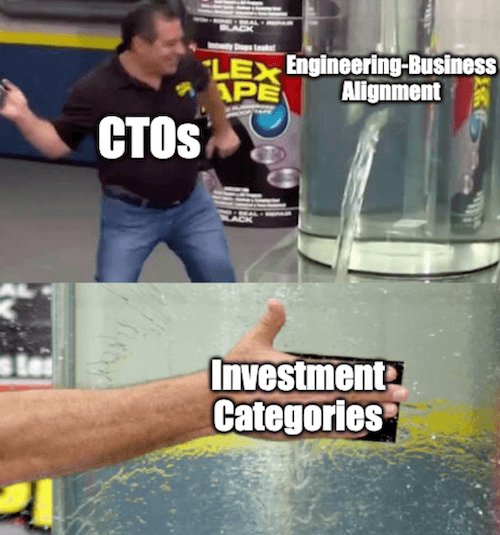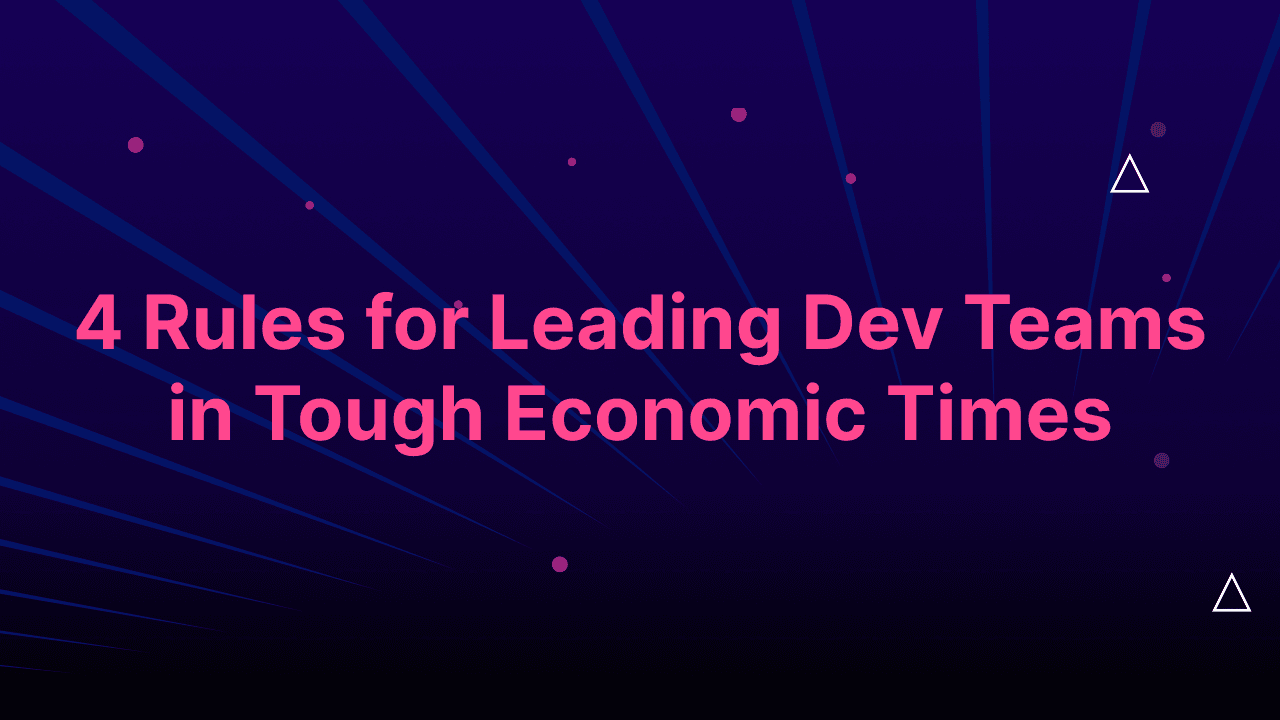Successful engineering-led growth can only happen when the people leading dev orgs do two things:
- Improve the efficiency of their engineering teams so that they focus as much time as possible on building, solving problems, and improving features.
- Ensure that the work their teams spend their time on aligns with company goals.
For the first of these two mandates - improving workflow efficiency - engineering leaders already have a host of metrics, tools, and playbooks at their disposal.
The second of these two mandates – aligning engineering resources with company priorities – is often much more subjective. Leaders often rely on completing different sales-driven projects or epics to show their business impact.
What’s typically missing is a high-level breakdown of the types of work an engineering org engages in, how much time & how many resources are devoted to each type, and the ability to match/adjust these resources to company goals.

Engineering Investment Metrics = The Business-Minded Benchmarks We’ve Needed
In a perfect world, leaders could show a direct line between engineering efforts and business impact. In reality, the nature of software engineering is complicated; whether you’re building new features, solving problems in the code base, or fighting fires.
Now armed with investment metrics – data on what types of work teams focus on — leaders can know what share of their team’s time and resources go toward different initiatives and benchmark themselves against other elite teams.
With visibility into how their team’s time is invested, engineering directors can more effectively strategize with other business leaders on how work should be prioritized to help the larger company.
The 4 Types of Engineering Investment Categories
1. New Value
The cutting edge of engineering, New Value covers work on developing new features. These innovations directly impact revenue growth, either through new customer acquisitions or expansion.
Whether launching an innovative feature, expanding capabilities, or supporting a novel platform, “New Value” is about driving forward momentum.
2. Feature Enhancements
In tech’s ever-evolving landscape, staying static is not an option. The Feature Enhancements category highlights the tweaks, iterations, and improvements made to existing features, ensuring they continue to meet user expectations and offer sustained customer satisfaction.

3. Developer Experience
An often-overlooked but crucial segment, Developer Experience is all about making life easier for your engineers. Any initiative that boosts the productivity of development teams, streamlines their workflow, or simply enhances their work experience falls under this banner.
4. KTLO (Keep The Lights On)
Some tasks and processes might not be glamorous but are often essential. KTLO efforts are the minimum tasks required to maintain stable operations, keep high service levels, and meet compliance & regulatory requirements.
It’s always worth examining your KTLO efforts. By identifying and rectifying inefficiencies, development teams can liberate more time, channeling it toward projects that drive impact.
Investment Benchmarks: Setting the Engineering North Star
It’s far too common to find yourself asking: is 8 in this category good? The truth is, you don’t know without context.
Without benchmarking your data, quantitative metrics only hold so much value. Benchmarking your engineering investment categories is pivotal in aligning development resources with overarching organizational objectives via context and a clear roadmap of best practices.
Leveraging data gathered from more than 100,000 developers across 64 countries and incorporating 3.6 million code branches from 2,000+ development teams, the 2023 Engineering Benchmarks Report offers an in-depth view of the current state of engineering practices globally.
Benchmarking the Investment Practices of Leading Teams
Important: These healthy investment levels are a starting point across the engineering orgs in our data set. They should change based on each company's time-sensitive needs and individual characteristics.

Based on the more than 2,000 engineering teams we studied, healthy, productive engineering teams seem to have a typical resource investment pattern:
New Value: 55%
Feature enhancement: 20%
Developer Experience: 15%
KTLO: 10%
Are these percentages right for your team? Maybe, maybe not: adjusting these proportions is not just about tweaking numbers but is driven by a company's objectives, the context of how your team works, and the need to remain agile in a changing landscape.
Typically, such adjustments aim to increase investments in the “New Value” category. This might involve reducing the “KTLO” proportion through targeted quality improvements and more efficient tooling. Alternatively, teams might consider focusing on code quality in initial feature delivery, reducing the need for refactoring and cutting down on “Feature Enhancement” allocation to direct more resources toward net-new.
Code With Your Company’s Confidence
Understanding how to allocate your team’s resources is a non-negotiable for engineering managers. LinearB’s 2023 Engineering Benchmarks provide a much-needed compass as technology and business landscapes continue to chart a path forward.
When leveraged effectively, benchmarks can illuminate the path forward, ensuring teams remain efficient, innovative, and aligned with broader business goals. Staying updated with these insights isn't just beneficial; it's essential for sustained growth and success.




